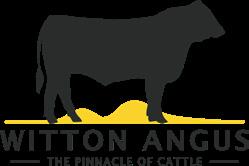
Friday 19th September at 1pm
On Property, 367 Curtin Road BORENORE, NSW
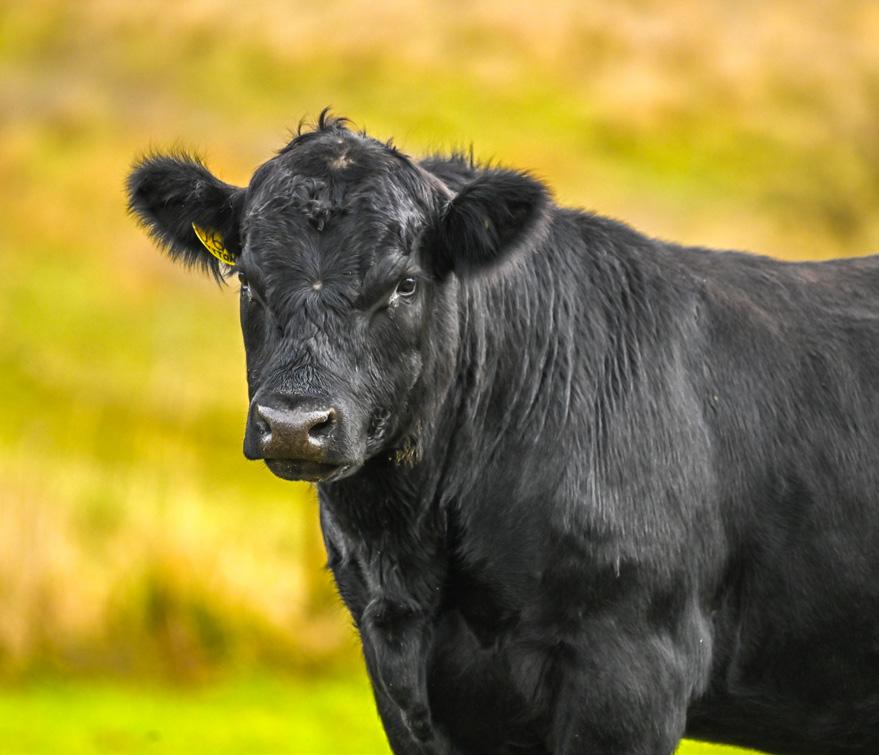
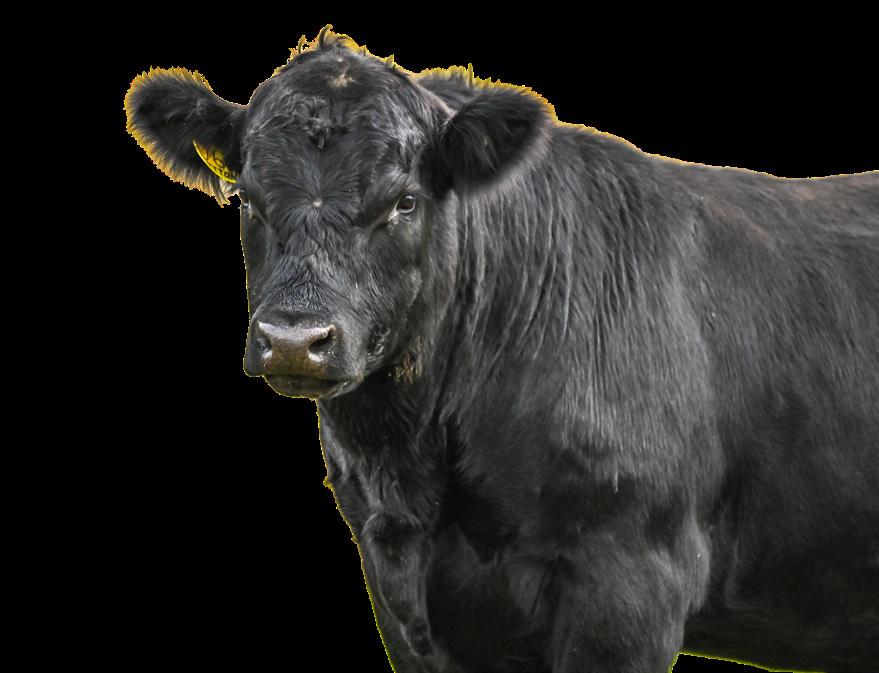

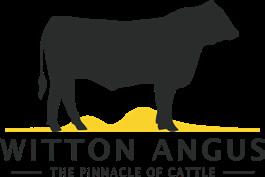


Friday 19th September at 1pm
On Property, 367 Curtin Road BORENORE, NSW




Friday, 19th September 2025 at 1pm - 31 Bulls & 15 PTIC Registered Heifers on offerOn Property, 367 Curtin
Laurie Bevan | 0418 635 784
Chris Kingham | 0418 238 285
“Witton Angus”
Curtin Rd Borenore, NSW 2800 | kinghambuilding@gmail.com
Kevin Miller, Whitty, Lennon & Co
Ryan Browne | 0447 313 923


Josh Crosby | 0490 813 260



It is with great pleasure that we warmly invite you to attend our 2nd Annual On-Property Bull sale.
Witton Angus is a family run property situated at the base of Mount Canobolas in Borenore.
The owners, Laurie and Ellen Bevan, together with their family, Chris and Emily Kingham and Chris and Katie Collins and their children William, Harry, Ruby, Mitchell, Olivia, Charlotte and Jack look forward to welcoming you onto our property.
Witton Angus begun its operation with Stud Angus Cattle in 2018, however our relationship with Angus commercial cattle has been in operation for well over 20 years.
At Witton Angus we are proud of our quality bred Stud and commercial cattle. Our central west climate experiences four seasons which enable us to grow substantial feed, and our cattle enjoy a mixture of natural grasses, wheat and oaten crops and supplemented with Lucerne and oaten hay, that has been harvested from our properties, during our cold months.
We aim to produce animals that not only have great growth, structure and easy calving but also have those highly sort after-meat-eating traits that Angus cattle are renowned for. Our
cattle are well handled, and this provides them with a quiet and easy-to-handle temperament.
This year we have on offer 31 quality, high performance Angus bulls, with an age spread from 18 months to 2 years.
We will be presenting sons from Millah Murrah Paratrooper, Baldridge Alternative and Baldridge Versatile, Lawsons Rocky, Texas Iceman as well as our home-grown sires.
This year we will also have on offer 15 Preg Tested in Calf Angus Society registered Heifers.
We hope you can join us for a cuppa and lunch. We look forward to showing you our exquisite Timber post and rail cattle yards and old-style timber barn shed. Something we are very proud of and gives our farm that unique and personal feel.
If you cannot attend our sale in person, AuctionsPlus will be running an online sale.
Thank you for taking the time to view our catalogue and we hope you can attend our sale day.
Warm regards
The Bevan, Kingham and Collins Family
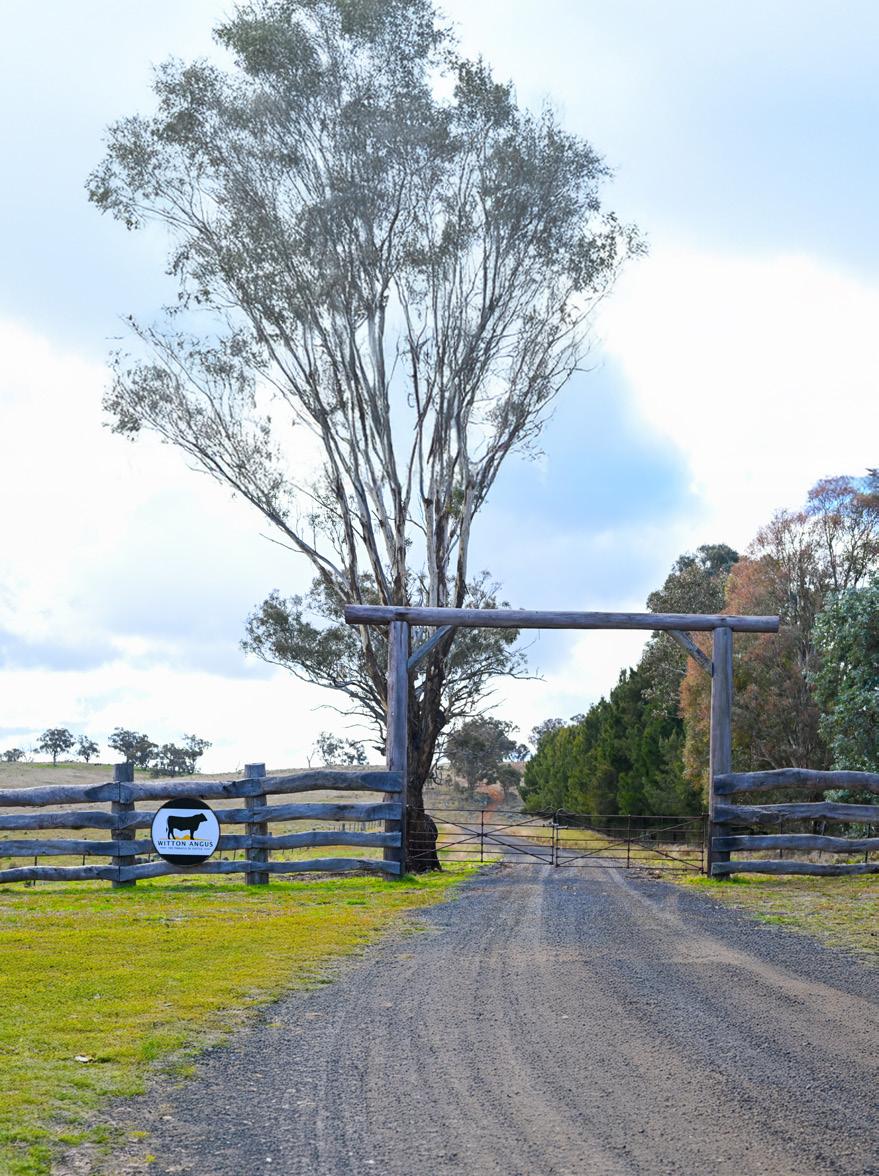

Client Testimonial
“We purchased Witton Michael, Son of Millah Murrah Quixote Q96, in 2023. He has served a mob of heifers and today we had a 99% pregnancy tested success rate. Very happy.” Thanks Paul.
Inspections are welcome from 10am on sale day, Friday 19th September 2025.
Prior inspections are welcomed by appointment.
Photos and videos will be available to view on AuctionsPlus closer to the sale.
All bulls offered are:
• Vaccinated according to recommendations with Pestigard, Vibrovax and Ultravac 7 in 1
• Semen tested and penis and testicles examined by Orange Vet Hospital. Certificates available.
• Drenched with cattle Cydectin pour on.
In-house transport available.
There is no vendor insurance on sale bulls. It will be the responsibility of the purchaser to insure their bulls.
All persons who attend our sale do so are their own risk, and vendors therefore assume no liability. All persons entering bull pens do so at their own risk.
The sale will be interfaced and live streamed with AuctionsPlus. Please visit www.auctionsplus.com.au for more information.
All animals are sold exclusive of GST.
Mobile service is available to Witton Angus, so phone bids can be accepted. Please contact us or our agent to arrange.
Light Lunch and refreshments will be available on the day with compliments of Witton Angus.
All bulls sold by Witton Angus are fertile and structurally sound to the best of our knowledge. If an animal becomes infertile or breaks down due to reasons other than injury or misadventure at any time in the next 12 months, we will:
1. Provide you with a satisfactory replacement if available or 2. Issue you with a credit note equal to the purchase price less the salvage value, that can be used to purchase available animals in future at Witton Angus.
Normal care needs to be taken, as we cannot replace an animal that is injured or dies for any reason. Any claims must be accompanied by a certificate from a registered veterinarian. All vet costs are the purchase’s responsibility.

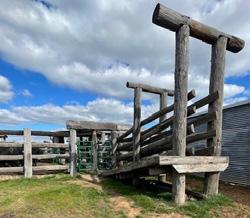

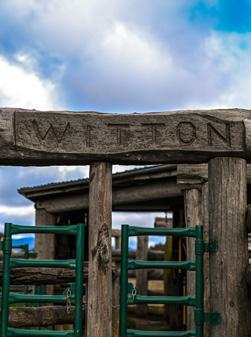
The TransTasman Angus Cattle Evaluation is the genetic evaluation program adopted by Angus Australia for Angus and Angus influenced beef cattle. The TransTasman Angus Cattle Evaluation uses Best Linear Unbiased Prediction (BLUP) technology to produce Estimated Breeding Values (EBVs) of recorded cattle for a range of important production traits (e.g. weight, carcase, fertility).
The TransTasman Angus Cattle Evaluation is an international genetic evaluation and includes pedigree, performance and genomic information from the Angus Australia and Angus New Zealand databases, along with selected information from the American and Canadian Angus Associations.
The TransTasman Angus Cattle Evaluation utilises a range of genetic evaluation software, including the internationally recognised BLUPF90 family of programs, and BREEDPLAN® beef genetic evaluation analytical software, as developed by the Animal Genetics and Breeding Unit (AGBU), a joint institute of NSW Agriculture and the University of New England, and Meat and Livestock Australia Limited (MLA).
An animal’s breeding value can be defined as its genetic merit for each trait. While it is not possible to determine an animal’s true breeding value, it is possible to estimate it. These estimates of an animal’s true breeding value are called EBVs (Estimated Breeding Values).
EBVs are expressed as the difference between an individual animal’s genetics and a historical genetic level (i.e. group of animals) within the TACE genetic evaluation, and are reported in the units in which the measurements are taken.
TACE EBVs can be used to estimate the expected difference in the genetics of two animals, with the expected difference equating to half the difference in the EBVs of the animals, all other things being equal (e.g. they are joined to the same animal/s).
For example, a bull with a 200 Day Growth EBV of +60 would be expected to produce progeny that are, on average, 10 kg heavier at 200 days of age than a bull with a 200 Day Growth EBV of +40 kg (i.e. 20
kg difference between the sire’s EBVs, then halved as the sire only contributes half the genetics).
Or similarly, a bull with an IMF EBV of +3.0 would be expected to produce progeny with on average, 1% more intramuscular fat in a 400 kg carcase than a bull with a IMF EBV of +1.0 (i.e. 2% difference between the sire’s EBVs, then halved as the sire only contributes half the genetics).
EBVs can also be used to benchmark an animal’s genetics relative to the genetics of other Angus or Angus infused animals recorded with Angus Australia.
To benchmark an animal’s genetics relative to other Angus animals, an animal’s EBV can be compared to the EBV reference tables, which provide:
• the breed average EBV
• the percentile bands table
The current breed average EBV is listed on the bottom of each page in this publication, while the current EBV reference tables are included at the end of these introductory notes.
For easy reference, the percentile band in which an animal’s EBV ranks is also published in association with the EBV.
An accuracy value is published with each EBV, and is usually displayed as a percentage value immediately below the EBV.
The accuracy value provides an indication of the reliability of the EBV in estimating the animal’s genetics (or true breeding value), and is an indication of the amount of information that has been used in the calculation of the EBV.
EBVs with accuracy values below 50% should be considered as preliminary or of low accuracy, 50-74% as of medium accuracy, 75-90% of medium to high accuracy, and 90% or greater as high accuracy.
EBVs are calculated for a range of traits within TACE, covering calving ease, growth, fertility, maternal performance, carcase merit, feed efficiency and structural soundness. A description of each EBV included in this publication is provided on the following page.
CEDir %
CEDtrs %
GL days
BW kg
200 Day kg
400 Day kg
600 Day kg
MCH cm
MBC score
MCW kg
Milk kg
DtC days
SS cm
CWT kg
EMA cm2
Rib Fat mm
P8 Fat mm
RBY %
IMF %
NFI-F kg/day
Doc %
Claw Set score
Foot
Angle score
Leg Angle score
$A $
Genetic differences in the ability of a sire’s calves to be born unassisted from 2 year old heifers.
Genetic differences in the ability of a sire’s daughters to calve unassisted at 2 years of age.
Genetic differences between animals in the length of time from the date of conception to the birth of the calf.
Genetic differences between animals in calf weight at birth.
Genetic differences between animals in live weight at 200 days of age due to genetics for growth.
Genetic differences between animals in live weight at 400 days of age.
Genetic differences between animals in live weight at 600 days of age.
Genetic differences between animals in the height of mature females.
Genetic differences between animals in the body condition of mature females.
Genetic differences between animals in live weight of cows at 5 years of age.
Genetic differences between animals in live weight at 200 days of age due to the maternal contribution of its dam.
Genetic differences between animals in the time from the start of the joining period (i.e. when the female is introduced to a bull) until subsequent calving.
Genetic differences between animals in scrotal circumference at 400 days of age.
Genetic differences between animals in hot standard carcase weight at 750 days of age.
Genetic differences between animals in eye muscle area at the 12/13th rib site in a 400 kg carcase.
Genetic differences between animals in fat depth at the 12/13th rib site in a 400 kg carcase.
Genetic differences between animals in fat depth at the P8 rump site in a 400 kg carcase.
Genetic differences between animals in boned out saleable meat from a 400 kg carcase.
Genetic differences between animals in intramuscular fat (marbling) at the 12/13th rib site in a 400 kg carcase.
Genetic differences between animals in feed intake at a standard weight and rate of weight gain when animals are in a feedlot finishing phase.
Genetic differences between animals in temperament.
Genetic differences in claw set structure (shape and evenness of claws).
Genetic differences in foot angle (strength of pastern, depth of heel).
Genetic differences in rear leg structure when viewed from the side (angle at front of the hock).
Genetic differences between animals in net profitability per cow joined in a typical commercial self replacing herd using Angus bulls. This selection index is not specific to a particular market end-point, but identifies animals that will improve overall net profitability in the majority of commercial, self replacing, grass and grain finishing beef production systems.
Higher EBVs indicate fewer calving difficulties in 2 year old heifers.
Higher EBVs indicate fewer calving difficulties in 2 year old heifers.
Lower EBVs indicate shorter gestation length.
Lower EBVs indicate lighter birth weight.
Higher EBVs indicate heavier live weight.
Higher EBVs indicate heavier live weight.
Higher EBVs indicate heavier live weight.
Higher EBVs indicate taller mature females.
Higher EBVs indicate more body condition of mature females.
Higher EBVs indicate heavier mature weight.
Higher EBVs indicate heavier live weight.
Lower EBVs indicate shorter time to calving.
Higher EBVs indicate larger scrotal circumference.
Higher EBVs indicate heavier carcase weight.
Higher EBVs indicate larger eye muscle area.
Higher EBVs indicate more fat.
Higher EBVs indicate more fat.
Higher EBVs indicate higher yield.
Higher EBVs indicate more intramuscular fat.
Lower EBVs indicate more feed efficiency.
Higher EBVs indicate better temperament.
Lower EBVs indicate less curl of the claw set.
Lower EBVs indicate more heel depth.
Lower EBVs indicate a less angular leg angle.
Higher selection indexes indicate greater profitability.
$
The $A-L index is similar to the $A index but is modelled on a production system where feed is surplus to requirements for the majority of the year, or the cost of supplying additional feed when animal feed requirements increase is low.
While the $A aims to maintain mature cow weight, the $A-L does not aim to limit the increase in mature cow weight as there is minimal cost incurred if the feed maintenance requirements of the female breeding herd increase as a result of selection decisions.
Higher selection indexes indicate greater profitability.

DOB: 29/03/2023 Registration Status: HBR
G A R PROPHETSV BALDRIDGE FORECASTER B160PV
BALDRIDGE PRATISSA W165#
Sire: USA19563587 BALDRIDGE VERSATILEPV
HOOVER DAM# BALDRIDGE BLACKBIRD A030# BALDRIDGE BLACKBIRD X89#


CONNEALY CAPITALIST 028# LD CAPITALIST 316PV
LD DIXIE ERICA 2053#
Dam: DZNQ96 YAMBA PRINCESS Q96#
PATHFINDER GENESIS G357PV YAMBA PRINCESS N192# YAMBA PRINCESS K143#
AUGUST 2025 TRANSTASMAN ANGUS CATTLE EVALUATION
Traits Observed: GL,BWT
DOB: 25/08/2023 Registration Status: HBR
RIVERBEND YOUNG LUCY W1470#
11 9
Mating Type: AI
PA POWER TOOL 9108SV YAMBA MAIN EVENT M35SV
YAMBA F6#

EF COMPLEMENT 8088PV EF COMMANDO 1366PV MILLAH MURRAH HIGHLANDER G18SV MILLAH MURRAH ELA M9PV MILLAH MURRAH ELA K127SV
Sire: NMMP15 MILLAH MURRAH PARATROOPER P15PV
Dam: DZNP134 YAMBA HAZEL P134#
TE MANIA BERKLEY B1PV YAMBA HAZEL L100# YAMBA G0065#

Genetic Status: AMFU,CAFU,DDFU,NHFU
DOB: 28/08/2023
Registration Status: HBR
EF COMPLEMENT 8088PV
EF COMMANDO 1366PV
RIVERBEND YOUNG LUCY W1470#
Sire: NMMP15 MILLAH MURRAH PARATROOPER P15PV
MILLAH MURRAH HIGHLANDER G18SV
MILLAH MURRAH ELA M9PV
MILLAH MURRAH ELA K127SV


AYRVALE BARTEL E7PV YAMBA NOSTRUM N206SV
YAMBA BARUNAH K185#
Dam: LAER28 WITTON WINNIE R28#
MILLAH MURRAH CONVERSION L324SV YAMBA PRIMROSE P77# YAMBA E146#
AUGUST 2025 TRANSTASMAN ANGUS CATTLE EVALUATION
Traits Observed: GL,BWT
Purchaser:.................................................................................................................................................................
Mating Type: AI Genetic Status:
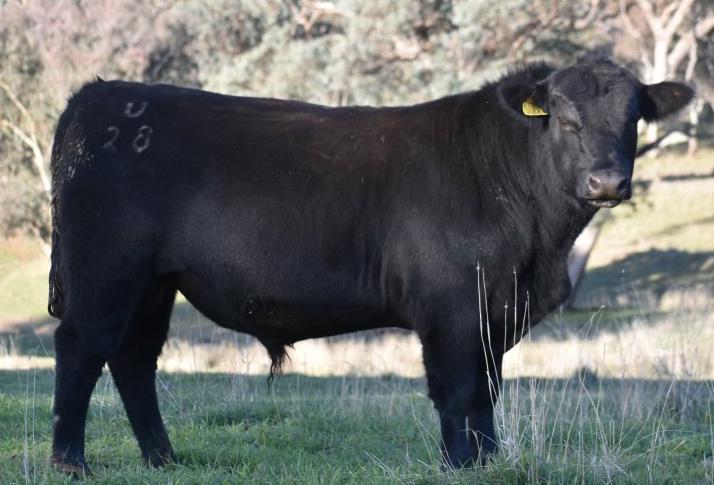
DOB: 29/08/2023
Registration Status: HBR
EF COMPLEMENT 8088PV
EF COMMANDO 1366PV
RIVERBEND YOUNG LUCY W1470#
Sire: NMMP15 MILLAH MURRAH PARATROOPER P15PV
MILLAH MURRAH HIGHLANDER G18SV
MILLAH MURRAH ELA M9PV
MILLAH MURRAH ELA K127SV

VIN-MAR O’REILLY FACTOR# BUSHS EASY DECISION 98PV
BUSHS BIG BLACKBIRD 7885#
Dam: LAE21S13 WITTON KATHY S13#
BOOROOMOOKA LEGEND L347SV YAMBA BARBARA P177# KANSAS BARBARA G243#
AUGUST 2025 TRANSTASMAN ANGUS CATTLE EVALUATION

Traits Observed: GL,BWT
Purchaser:.................................................................................................................................................................

DOB: 01/09/2023
Registration Status: HBR
EF COMPLEMENT 8088PV EF COMMANDO 1366PV
RIVERBEND YOUNG LUCY W1470#
Sire: NMMP15 MILLAH MURRAH PARATROOPER P15PV
MILLAH MURRAH HIGHLANDER G18SV
MILLAH MURRAH ELA M9PV MILLAH MURRAH ELA K127SV


EF COMMANDO 1366PV BALDRIDGE 38 SPECIALPV
BALDRIDGE ISABEL Y69#
Dam: LAER15 WITTON CHARLOTTE R15#
BOOROOMOOKA LEGEND L347SV YAMBA HIGHNESS P126# YAMBA HIGHNESS H18#
AUGUST 2025 TRANSTASMAN ANGUS CATTLE EVALUATION
Traits Observed: GL,BWT
$390 17 23
Mating Type: AI Genetic Status:
Purchaser:................................................................................................................................................................. $:............................................................
DOB: 31/08/2023 Registration Status: HBR
POSS ELMARETTA 736#
Mating Type: AI
TE MANIA EMPEROR E343PV BOOROOMOOKA LEGEND L347SV
BOOROOMOOKA VIZIER A268#

POSS TOTAL IMPACT 745# POSS EASY IMPACT 0119# HOOVER DAM# BALDRIDGE BLACKBIRD A030# BALDRIDGE BLACKBIRD X89#
Sire: USA18837398 BALDRIDGE ALTERNATIVE E125PV
Dam: DZNP141 YAMBA REGENCY P141#
TUWHARETOA REGENT D145PV YAMBA WILCOOLA REGENT K30# YAMBA F8SV
Perc 27 15 27 33 41 52 41 24 2 50 97 62

Perc 64 25 59 30 59 73 29 37 49
Genetic Status: AMFU,CAFU,DD8%,NHFU
DOB: 31/08/2023
Registration Status: APR
G A R PROPHETSV BALDRIDGE FORECASTER B160PV
BALDRIDGE PRATISSA W165#
Sire: USA19563587 BALDRIDGE VERSATILEPV
HOOVER DAM# BALDRIDGE BLACKBIRD A030# BALDRIDGE BLACKBIRD X89#

DSK V6 YARDARM Y27PV TALIS JEDI J330SV
TALIS GRETEL B594#
Dam: DZNP55 YAMBA HEAVEN CAN WAIT P55#
MERRIDALE ENTREVOIR E50PV YAMBA HEAVEN CAN WAIT H38# YAMBA ANNE Y42#
AUGUST 2025 TRANSTASMAN ANGUS CATTLE EVALUATION

Traits Observed: BWT
DOB: 03/09/2023 Registration Status: HBR
G A R PROGRESSSV G A R MOMENTUMPV
G A R BIG EYE 1770#
Sire: VLYR4010 LAWSONS ROCKY R4010PV
JUDD J5PV LAWSONS JUDD P4005SV LAWSONS PROPHET M4047#

Dam: NDLR84 OUTWEST INA ABIGAIL R84PV G A R PROPHET 2984#
G A R MOMENTUMPV G A R INERTIAPV OUTWEST 9969 JOVIAL J187SV OUTWEST JOV ABIGAIL P176SV OUTWEST PRE ABIGAIL F21#
Perc 21 7 26 21 45 42 60 68 43 56 32 69

Perc 78 33 36 25 30 24 70 23 98
Mating Type: AI Genetic Status: AMFU,CAFU,DDFU,NHFU
DOB: 03/09/2023
POSS TOTAL IMPACT 745# POSS EASY IMPACT 0119#
POSS ELMARETTA 736#
Sire: USA18837398 BALDRIDGE ALTERNATIVE E125PV
HOOVER DAM# BALDRIDGE BLACKBIRD A030# BALDRIDGE BLACKBIRD X89#

YAMBA HAZEL P134# YAMBA HAZEL L100#

Traits Observed: GL,BWT
Purchaser:.................................................................................................................................................................
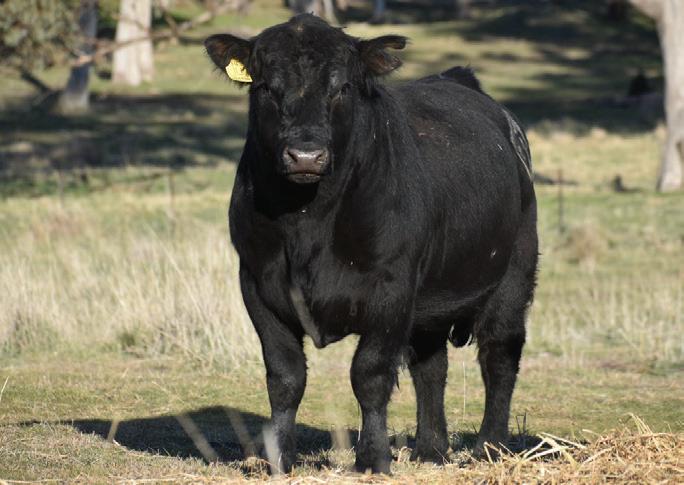
DOB: 04/09/2023
EF COMPLEMENT 8088PV
EF COMMANDO 1366PV
RIVERBEND YOUNG LUCY W1470#
Sire: NMMP15 MILLAH MURRAH PARATROOPER P15PV
MILLAH MURRAH HIGHLANDER G18SV

MILLAH MURRAH JACKPOT J137PV MILLAH MURRAH CONVERSION L324SV
MILLAH MURRAH FLOWER G236SV
MILLAH MURRAH ELA M9PV MILLAH MURRAH ELA K127SV Dam: DZNP191 YAMBA JAPONICA P191#
TUWHARETOA REGENT D145PV YAMBA JAPONICA DZN J42# YAMBA D73#
AUGUST 2025 TRANSTASMAN ANGUS CATTLE EVALUATION

Traits Observed: GL,BWT
Purchaser:.................................................................................................................................................................
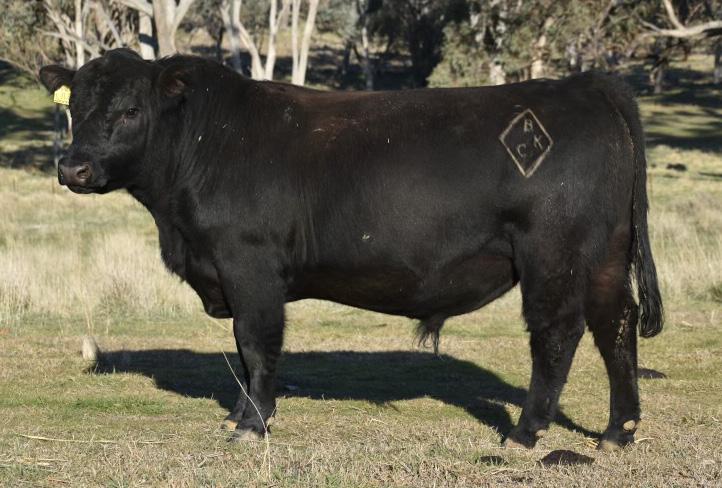
DOB: 04/09/2023
G A R PROGRESSSV G A R MOMENTUMPV
G A R BIG EYE 1770#
Sire: VLYR4010 LAWSONS ROCKY R4010PV
PARINGA JUDD J5PV LAWSONS JUDD P4005SV LAWSONS PROPHET M4047#


Traits Observed:

DOB: 05/09/2023
Registration Status: HBR
POSS TOTAL IMPACT 745#
POSS EASY IMPACT 0119#
POSS ELMARETTA 736#
Sire: USA18837398 BALDRIDGE ALTERNATIVE E125PV
HOOVER DAM# BALDRIDGE BLACKBIRD A030# BALDRIDGE BLACKBIRD X89#

Mating Type: AI
TE MANIA EMPEROR E343PV BOOROOMOOKA LEGEND L347SV
BOOROOMOOKA VIZIER A268#
Dam: DZNQ191 YAMBA Q191#
TE MANIA BERKLEY B1PV YAMBA G0082# LAWSONS HENRY VIII Z1303#
AUGUST 2025 TRANSTASMAN ANGUS CATTLE EVALUATION

Traits Observed: GL,BWT
Purchaser:.................................................................................................................................................................
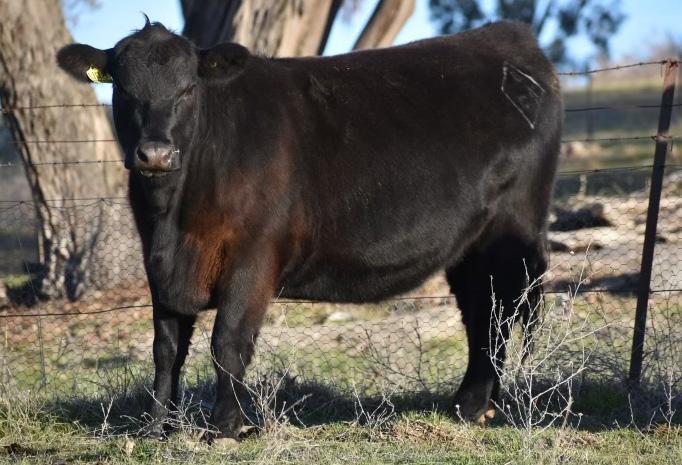
DOB: 07/09/2023
EF COMPLEMENT 8088PV EF COMMANDO 1366PV
RIVERBEND YOUNG LUCY W1470#
Sire: NMMP15 MILLAH MURRAH PARATROOPER P15PV
MILLAH MURRAH HIGHLANDER G18SV
MILLAH MURRAH ELA M9PV

TE MANIA EMPEROR E343PV BOOROOMOOKA LEGEND L347SV
BOOROOMOOKA VIZIER A268#
MILLAH MURRAH ELA K127SV Dam: DZNQ209 YAMBA WILCOOLA Q209#
ARDROSSAN EQUINOX B75#
ARDROSSAN WILCOOLA E186#
ARDROSSAN WILCOOLA A356#

AUGUST 2025 TRANSTASMAN ANGUS CATTLE EVALUATION
Traits Observed: GL,BWT
Purchaser:.................................................................................................................................................................

BALDRIDGE PRATISSA W165#
Sire: USA19563587 BALDRIDGE VERSATILEPV

PA POWER TOOL 9108SV
YAMBA MAIN EVENT M35SV
YAMBA F6#
Dam: DZNP172 YAMBA VICTORIA P172#
YAMBA FOREVERMORE F36SV
YAMBA VICTORIA M246SV
ABBOTT VICTORIA H54#

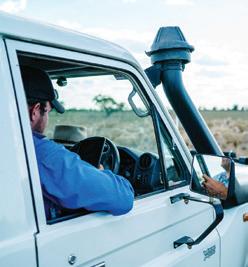

DOB: 08/09/2023
G A R PROPHETSV BALDRIDGE FORECASTER B160PV
BALDRIDGE PRATISSA W165#
Sire: USA19563587 BALDRIDGE VERSATILEPV
HOOVER DAM# BALDRIDGE BLACKBIRD A030# BALDRIDGE BLACKBIRD X89#

TEHAMA REVERE# S POWERPOINT WS 5503PV
S QUEEN ESSA 248#
Dam: LAER12 WITTON KATIE R12#
YAMBA MANGO M125SV YAMBA KRAWLY P147# YAMBA KRAWLY M147#
AUGUST 2025 TRANSTASMAN ANGUS CATTLE EVALUATION

Traits Observed: GL,BWT
Purchaser:.................................................................................................................................................................

DOB: 08/09/2023
Registration Status: HBR
EF COMPLEMENT 8088PV EF COMMANDO 1366PV
RIVERBEND YOUNG LUCY W1470#
Sire: NMMP15 MILLAH MURRAH PARATROOPER P15PV
MILLAH MURRAH HIGHLANDER G18SV
MILLAH MURRAH ELA M9PV MILLAH MURRAH ELA K127SV


MILLAH MURRAH JACKPOT J137PV MILLAH MURRAH CONVERSION L324SV
MILLAH MURRAH FLOWER G236SV
Dam: DZNP189 YAMBA POLLY P189#
YAMBA FOREVERMORE F36SV YAMBA POLLY J196# KANGAROO POLLY W20#
AUGUST 2025 TRANSTASMAN ANGUS CATTLE EVALUATION
Traits Observed: GL,BWT
Mating Type: AI Genetic Status:
Purchaser:................................................................................................................................................................. $:............................................................
DOB: 11/09/2023
G A R PROGRESSSV G A R MOMENTUMPV
G A R BIG EYE 1770#
Sire: VLYR4010 LAWSONS ROCKY R4010PV
PARINGA JUDD J5PV LAWSONS JUDD P4005SV LAWSONS PROPHET M4047#


Dam:
BALDRIDGE BRONCSV OUTWEST
PICADOR P1SV
BLACKOUT IG JONAS J1SV OUTWEST JNS WOOMERA P164SV OUTWEST 5050 WOOMERA G6#
DOB: 12/09/2023
Registration Status: HBR
BALDRIDGE COMMAND C036PV BEN NEVIS PROPOGATE P37SV
BEN NEVIS GERANIUM J134SV
Sire: JXJ21S23 MERIT FARM PROPOGATE S23SV
RENNYLEA J474SV
MERIT FARM QUEBEC Q11#
BEN NEVIS GERANIUM K97#


TE MANIA EMPEROR E343PV
BOOROOMOOKA LEGEND L347SV
Dam: DZNP177 YAMBA BARBARA P177#
KANSAS DARWIN D66SV
KANSAS BARBARA G243#
AUGUST 2025 TRANSTASMAN ANGUS CATTLE EVALUATION
Traits Observed: BWT
Purchaser:.................................................................................................................................................................
BOOROOMOOKA VIZIER A268#
KANSAS BARBARA D40#
Mating Type: Natural Genetic Status:
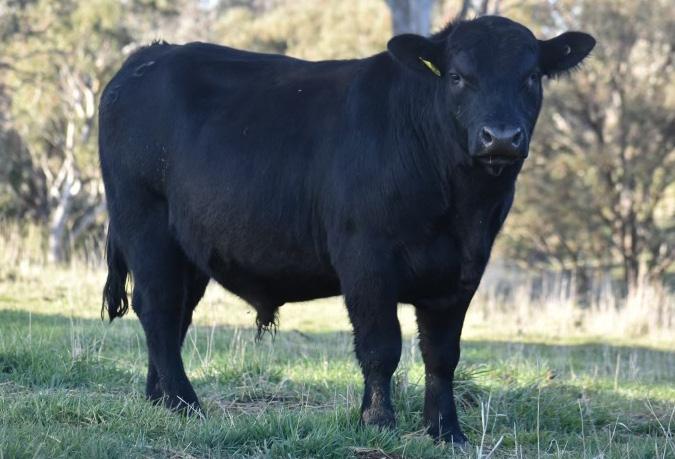
DOB: 01/11/2023
Registration Status: HBR
LD CAPITALIST 316PV MUSGRAVE 316 STUNNERPV
MCATL BLACKBIRD 831-1378#
Sire: LAE21S2 WITTON BRUISER S2SV
TALIS JEDI J330SV YAMBA PATE P60# YAMBA WILCOOLA L18SV

VIN-MAR O’REILLY FACTOR# BUSHS EASY DECISION 98PV
BUSHS BIG BLACKBIRD 7885#
Dam: LAE21S14 WITTON KYLIE S14#
TE MANIA EMPEROR E343PV YAMBA BARNNAH P70# ABBOTT BARUNAH E7#
AUGUST 2025 TRANSTASMAN ANGUS CATTLE EVALUATION

Traits Observed: BWT
Purchaser:.................................................................................................................................................................
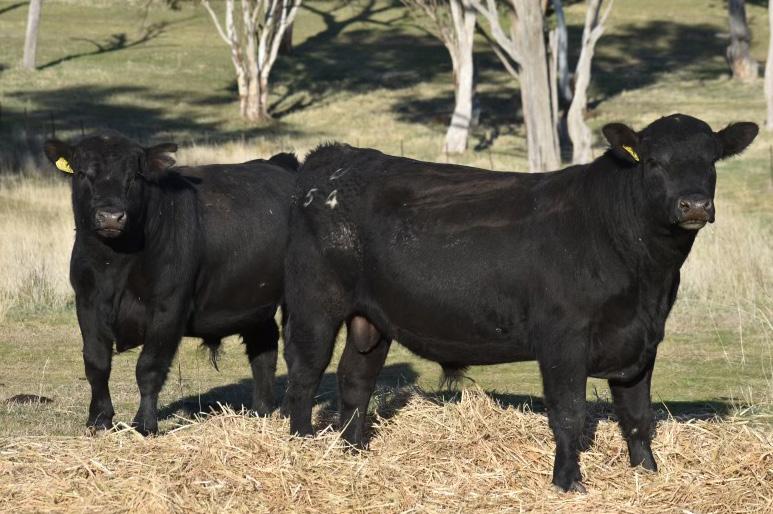
DOB: 21/02/2024
Registration Status: HBR
G A R PROPHETSV BALDRIDGE FORECASTER B160PV
BALDRIDGE PRATISSA W165#
Sire: USA19563587 BALDRIDGE VERSATILEPV
HOOVER DAM# BALDRIDGE BLACKBIRD A030# BALDRIDGE BLACKBIRD X89#

Mating Type: AI
PA POWER TOOL 9108SV YAMBA MAIN EVENT M35SV
Dam: DZNP167 YAMBA MOONGARA P167# YAMBA F6#
TE MANIA BERKLEY B1PV YAMBA G0064# KENNY’S CREEK MOONGARA A79#
AUGUST 2025 TRANSTASMAN ANGUS CATTLE EVALUATION

$396 21 19
Genetic Status: AM6%,CA1%,DDFU,NHFU
Traits Observed: GL
Purchaser:.................................................................................................................................................................
DOB: 25/02/2024 Registration Status: APR Mating Type: AI
G A R PROPHETSV BALDRIDGE FORECASTER B160PV
BALDRIDGE PRATISSA W165#
Sire: USA19563587 BALDRIDGE VERSATILEPV
HOOVER DAM# BALDRIDGE BLACKBIRD A030# BALDRIDGE BLACKBIRD X89#


MILLAH MURRAH JACKPOT J137PV MILLAH MURRAH CONVERSION L324SV
MILLAH MURRAH FLOWER G236SV
Dam: DZNP96 YAMBA P96#
ABBOTT PERFORMER E32SV YAMBA KALLEEN K133# LAWSONS HENRY VIII Y1188#
Status: AM3%,CAFU,DD4%,NHFU
DOB: 26/02/2024
Registration Status: HBR
G A R PROPHETSV BALDRIDGE FORECASTER B160PV
BALDRIDGE PRATISSA W165#
Sire: USA19563587 BALDRIDGE VERSATILEPV
HOOVER DAM# BALDRIDGE BLACKBIRD A030# BALDRIDGE BLACKBIRD X89#

CONNEALY CAPITALIST 028# LD CAPITALIST 316PV
LD DIXIE ERICA 2053#
Dam: DZNQ96 YAMBA PRINCESS Q96#
PATHFINDER GENESIS G357PV YAMBA PRINCESS N192# YAMBA PRINCESS K143#
AUGUST 2025 TRANSTASMAN ANGUS CATTLE EVALUATION
Perc 22 33 63 31 13 22 34 44 33 90 79 69

Perc 13 31 24 55 49 42 89 19 45
Traits Observed: GL
Purchaser:.................................................................................................................................................................
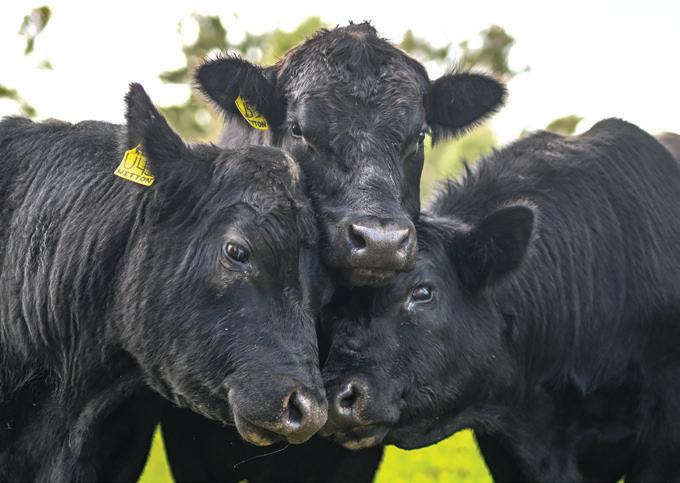
DOB: 26/02/2024
Registration Status: HBR
BASIN PAYWEIGHT 1682PV POSS MAVERICKPV
POSS PRIDE 5163#
Sire: DXTR725 TEXAS ICEMAN R725PV
BANGADANG WESTERN EXPRESS E10SV
TEXAS UNDINE H647PV TEXAS UNDINE Z183PV


G A R PROPHETSV BALDRIDGE BEAST MODE B074PV
BALDRIDGE ISABEL Y69#
Dam: DZNQ162 YAMBA QUEENIE Q162#
LAWSONS TANK X1235# YAMBA E44# LAWSONS NEW DESIGN 1407 A80#
AUGUST 2025 TRANSTASMAN ANGUS CATTLE EVALUATION
Traits Observed: GL
Purchaser:.................................................................................................................................................................
DOB: 27/02/2024
BASIN PAYWEIGHT 1682PV POSS MAVERICKPV
Sire: DXTR725 TEXAS ICEMAN R725PV POSS PRIDE 5163#

Mating Type: AI Genetic Status: AMFU,CAFU,DD1%,NHFU
Registration Status: HBR Mating Type: AI
BALDRIDGE BEAST MODE B074PV CLUNIE RANGE QUEENSLANDER Q311PV
ABERDEEN ESTATE LAURA J81PV
Dam: LAE21S23 WITTON CHARLIE S23#
BANGADANG WESTERN EXPRESS E10SV TEXAS UNDINE H647PV TEXAS UNDINE Z183PV
BOOROOMOOKA LEGEND L347SV YAMBA LAWSONS P161# YAMBA G0121#

Perc 27 84
Genetic Status: AM1%,CA1%,DDFU,NHFU
DOB: 29/02/2024
Registration Status: APR
BASIN PAYWEIGHT 1682PV POSS MAVERICKPV
POSS PRIDE 5163#
Sire: DXTR725 TEXAS ICEMAN R725PV
BANGADANG WESTERN EXPRESS E10SV
TEXAS UNDINE H647PV TEXAS UNDINE Z183PV


Mating Type: AI
EF COMPLEMENT 8088PV
MILLAH MURRAH COMPLEMENT L115PV
MILLAH MURRAH FLOWER H136SV
Dam: DZNP158 YAMBA P158#
MILLAH MURRAH EMPEROR J249PV YAMBA EMPRESS M203# YAMBA D37#
AUGUST 2025 TRANSTASMAN ANGUS CATTLE EVALUATION
Traits Observed: GL
Purchaser:.................................................................................................................................................................
Genetic Status: AM5%,CAFU,DD12%,NH4%
DOB: 01/03/2024 Registration Status: HBR Mating Type: AI
BASIN PAYWEIGHT 1682PV POSS MAVERICKPV
POSS PRIDE 5163#
Sire: DXTR725 TEXAS ICEMAN R725PV
BANGADANG WESTERN EXPRESS E10SV
UNDINE H647PV TEXAS UNDINE Z183PV

PA POWER TOOL 9108SV YAMBA MAIN EVENT M35SV
YAMBA F6#
Dam: DZNP131 YAMBA BARUNA P131#
ABBOTT PERFORMER E32SV
YAMBA BARUNA EST E7 L85#
ABBOTT BARUNAH E7#
Perc 75 58 82 54 53 57 49 44 43 64 66 44

Perc 24 88 48 56 54 24 47 66
DOB: 11/03/2024
Registration Status: HBR
H P C A PROCEEDPV
BEN NEVIS PRIMUS P57PV
BEN NEVIS JEAN H215SV
Sire: JXJ21S61 MERIT FARM JEAN S61SV
JSRL JACK’S JOKER J1PV
BEN NEVIS JEAN M37#
BEN NEVIS JEAN J148SV


EF COMPLEMENT 8088PV
MILLAH MURRAH COMPLEMENT L115PV
MILLAH MURRAH FLOWER H136SV
Dam: DZNP44 YAMBA MAIDEN P44#
ARDROSSAN EQUATOR A241PV YAMBA MAIDEN M31# YAMBA F15#
AUGUST 2025 TRANSTASMAN ANGUS CATTLE EVALUATION
Traits Observed: None
Purchaser:.................................................................................................................................................................
Mating Type: Natural Genetic Status:

DOB: 13/03/2024
Registration Status: HBR
LD CAPITALIST 316PV MUSGRAVE 316 STUNNERPV
MCATL BLACKBIRD 831-1378#
Sire: LAE21S2 WITTON BRUISER S2SV
TALIS JEDI J330SV YAMBA PATE P60# YAMBA WILCOOLA L18SV

Mating Type: Natural
DSK V6 YARDARM Y27PV
TALIS JEDI J330SV
TALIS GRETEL B594#
Dam: DZNP59 YAMBA JEWEL P59#
YAMBA FOREVERMORE F36SV YAMBA JEWEL DZN J73SV ALPINE ERNESTINE E289#
AUGUST 2025 TRANSTASMAN ANGUS CATTLE EVALUATION

Traits Observed: None
Purchaser:.................................................................................................................................................................
DOB: 16/03/2024
LD CAPITALIST 316PV MUSGRAVE 316 STUNNERPV
Registration Status: APR
MCATL BLACKBIRD 831-1378#
Sire: LAE21S2 WITTON BRUISER S2SV
TALIS JEDI J330SV YAMBA PATE P60# YAMBA WILCOOLA L18SV


Mating Type: Natural
BOOROOMOOKA VIZIER A268#
Dam: DZNP118 YAMBA P118#
TE MANIA EMPEROR E343PV BOOROOMOOKA LEGEND L347SV YAMBA FOREVERMORE F36SV YAMBA J181# LAWSONS PARAMOUNT W1070#
Genetic Status: AM6%,CAFU,DD1%,NHFU
DOB: 20/03/2024
LD CAPITALIST 316PV MUSGRAVE 316 STUNNERPV
MCATL BLACKBIRD 831-1378#
Sire: LAE21S2 WITTON BRUISER S2SV
TALIS JEDI J330SV YAMBA PATE P60# YAMBA WILCOOLA L18SV


TE MANIA EMPEROR E343PV YAMBA MANGO M125SV
YAMBA LADY STONE H83#
Dam: DZNP119 YAMBA HAPPYVALLEY P119#
CARABAR DOCKLANDS D62PV YAMBA HAPPY VALLEY M94# YAMBA HAPPY VALLEY H159#
AUGUST 2025 TRANSTASMAN ANGUS CATTLE EVALUATION
Registration Status: HBR Mating Type: Natural Genetic Status:
Traits Observed: None
Purchaser:.................................................................................................................................................................

DOB: 22/03/2024
Registration Status: HBR
LD CAPITALIST 316PV MUSGRAVE 316 STUNNERPV
MCATL BLACKBIRD 831-1378#
Sire: LAE21S2 WITTON BRUISER S2SV
TALIS JEDI J330SV YAMBA PATE P60# YAMBA WILCOOLA L18SV

Mating Type: Natural
TE MANIA EMPEROR E343PV BOOROOMOOKA LEGEND L347SV
BOOROOMOOKA VIZIER A268#
Dam: DZNP161 YAMBA LAWSONS P161#
ONSLOW ACCESIBULL D46SV YAMBA G0121# LAWSONS PARAMOUNT W1189#
AUGUST 2025 TRANSTASMAN ANGUS CATTLE EVALUATION

Genetic Status: AM2%,CA2%,DDFU,NHFU
Traits Observed: None
Purchaser:.................................................................................................................................................................


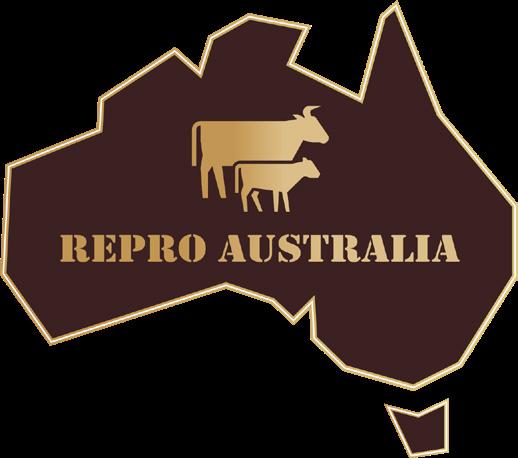
DOB: 30/01/2017 Registration Status: HBR Mating Type: Natural
TC TOTAL 410#
POSS TOTAL IMPACT 745#
POSS BLACKCAP 5116#
Sire: USA16750909 POSS EASY IMPACT 0119#
HYLINE RIGHT TIME 338#
POSS ELMARETTA 736#
POSS ELMARETTA 025#


SYDGEN C C & 7# HOOVER DAM#
ERICA OF ELLSTON C124#
Dam: USA17770899 BALDRIDGE BLACKBIRD A030#
STYLES UPGRADE J59#
BALDRIDGE BLACKBIRD X89# BALDRIDGE BLACKBIRD P160#
Traits Observed: Genomics
Statistics: Number of Herds: 54, Prog Analysed: 799, Genomic Prog: 617
C R A BEXTOR 872 5205 608# G A R PROPHETSV
Sire: USA18203854 BALDRIDGE FORECASTER B160PV G A R OBJECTIVE 1885#
GAR-EGL PROTEGE# BALDRIDGE PRATISSA W165# BALDRIDGE PRATISSIA S4#


DOB: 24/04/2019 Registration Status: HBR Mating Type: Natural Genetic Status: AMF,CAF,DDF,NHF, DWF,MAF,MHF,OHF, OSF,RGF
1
Traits Observed: Genomics
SYDGEN C C & 7# HOOVER DAM#
ERICA OF ELLSTON C124#
Dam: USA17770899 BALDRIDGE BLACKBIRD A030#
STYLES UPGRADE J59# BALDRIDGE BLACKBIRD X89# BALDRIDGE BLACKBIRD P160#
Statistics: Number of Herds: 31, Prog Analysed: 891, Genomic Prog: 710
DOB: 23/08/2020
Registration Status: HBR
G A R PREDESTINED# G A R PROGRESSSV
G A R OBJECTIVE 2345#
Sire: USA17354145 G A R MOMENTUMPV
ALC BIG EYE D09N#


Mating Type: AI
G A R BIG EYE 1770# G A R OBJECTIVE 3387# Dam: VLYP4005 LAWSONS JUDD P4005
G A R PROPHETSV LAWSONS PROPHET M4047# LAWSONS BARTEL E7 J4026#
Genetic Status: AMF,CAF,DDF,NHF, DWF,MAF,MHF,OHF, OSF,RGF
Traits Observed: CE,BWT,200WT(x2),400WT,SC,Scan(EMA,Rib,Rump,IMF),Genomics
Statistics: Number of Herds: 83, Prog Analysed: 2136, Genomic Prog: 1469
DOB: 29/01/2018
Registration Status: HBR
Mating Type: AI
HIGHLANDER OF STERN AB# MILLAH MURRAH HIGHLANDER G18SV

BASIN FRANCHISE P142# EF COMPLEMENT 8088PV B/R AMBUSH 28#
Sire: USA17082311 EF COMMANDO 1366PV EF EVERELDA ENTENSE 6117#
RIVERBEND YOUNG LUCY W1470# RIVERBEND YOUNG LUCY T1080#

MILLAH MURRAH PRUE D85PV
Dam: NMMM9 MILLAH MURRAH ELA M9PV
MATAURI REALITY 839# MILLAH MURRAH ELA K127SV MILLAH MURRAH ELA G88SV
AUGUST 2025 TRANSTASMAN ANGUS CATTLE EVALUATION Dir Dtrs
Traits Observed: GL,BWT,200WT(x2),400WT(x2),Scan(EMA,Rib,Rump,IMF),DOC,Genomics
Statistics: Number of Herds: 362, Prog Analysed: 7423, Genomic Prog: 5637
Genetic Status: AMF,CAF,DDF,NHF, DWF,MAF,MHF,OHF, OSF,RGF
DOB: 02/04/2020
Registration Status: HBR
BASIN PAYWEIGHT 006S#
BASIN PAYWEIGHT 1682PV
21AR O LASS 7017#
Sire: USA18962396 POSS MAVERICKPV
POSS HOOVER DAM 2509#
POSS PRIDE 5163# POSS PRIDE 9526#


Mating Type: ET
COONAMBLE Z3PV
EXPRESS E10SV
BANGADANG WILCOOLA Y7#
Dam: DXTH647 TEXAS UNDINE H647PV
BUSHS GRAND DESIGN#
TEXAS UNDINE Z183PV TEXAS UNDINE X221#
Genetic Status: AMF,CAF,DDF,NHF, DWF,MAF,MHF,OHF, OSF,RGF
Traits Observed: 200WT,400WT,SC,Scan(EMA,Rib,Rump,IMF),DOC,Structure(Claw Set x 1, Foot Angle x 1),Genomics
Statistics: Number of Herds: 162, Prog Analysed: 1351, Genomic Prog: 673








